The Vietnam-Cambodia-Laos border marker, constructed in 2007 and completed in early 2008, is a special project that bears the mark of solidarity and friendship between the three countries. The marker's construction was closely supervised by experts from the three countries.
The 2 meter high, 900 kg heavy, triangular shaped landmark is made of durable and aesthetic granite. Each side of the landmark is adorned with the national emblem, the year of its establishment and the country name in prominent red letters, demonstrating the solemnity and characteristics of each country.
Vietnam-Cambodia-Laos border landmark project. |
On the Vietnamese side, the landmark faces Po Y commune, Ngoc Hoi district, Kon Tum province; on the Lao side, it is Attapeu province and on the Cambodian side, it is Rattanakiri province. The "three-border landmark" where "the rooster crows in the morning, three countries can hear together" has become a famous place in the northernmost border region of the Central Highlands.
Also at this place, many meaningful and highly symbolic activities in the three countries' border defense friendship exchange program were held.
The path up to the three-country border landmark has 120 steps. |
After climbing 120 steep steps from the foot of the milestone to the top of Doi Tron, standing before the "Indochina Crossroads" milestone standing firmly in the vast space, everyone was moved to tears.
Soldiers of the Bo Y International Border Gate Border Guard Station shared that the joint patrol activities of the border protection forces of the three countries are a living proof of the solidarity that is constantly being cultivated.
This is a sacred intersection that belongs not only to the Central Highlands mountains and forests, but also to the entire nation. On holidays, the national flags of the three countries will fly along the path to the milestone.
Proud, moved to tears when visiting the sacred milestone. |
The border marker is a sacred symbol clearly demonstrating the will and determination of the Governments and peoples of the three brotherly countries in trust, understanding and the spirit of friendly cooperation.
Visiting the landmark, visitors have the opportunity to admire the natural beauty, and more importantly, deeply feel the spirit of protecting the sovereignty of the Fatherland and the responsibility of preserving the sacred border.
The national emblem and name of our country appear solemnly. |
Kon Tum province border guards are always on duty, protecting every inch of border land.
Compared to many years ago, now, the road to "Indochina Crossroads" is not too difficult, but each movement, each step seems to contain sacred emotions, making people unable to "speed forward" and take steps.
Everyone wants to walk and watch, look at the changing colors of the clouds, the wind blowing around, the trees and flowers as if wanting to whisper and chat with distant guests.
Peaceful border scene. |
From the windy mountain top, in the vast space, we can see the territory of three countries. This border marker is about 10km from Bo Y International Border Gate and 3km from the main border junction.
This is Vietnam's second "tri-border landmark", after the first landmark of the three countries Vietnam-Laos-China at A Pa Chai (Sin Thau commune, Muong Nhe district, Dien Bien province).
"Indochina Crossroads" is increasingly attracting tourists. |
In the solemn atmosphere of the border post patrol, those who had the honor to witness it all voluntarily maintained order, quietly observed and respected the especially important task of the border guards.
The ceremony of saluting the milestone with the attentive gaze, decisive movements filled with emotion of the soldiers when checking the details of the national emblem and the country name on the milestone surface leaves an unforgettable impression on people's hearts.
This season, the "specialty" of the border region is... clouds! |
Right at the foot of the hill, next to the Traditional Exhibition House, the Truong Son Martyrs Memorial Temple is a souvenir shop area and parking lot, creating a spacious, airy space with an area of 3,600m².
The rolling hills and thousands of pine trees singing in the cool breeze bring a sense of peace and serenity. On the top of the hill, a flat land is covered with many lush green trees, planted by representatives of the three countries, creating the "Friendship Garden".
Locals proudly introduce that in the wild sunflower season, standing here, you can admire the hillsides filled with brilliant yellow flowers, creating a beautiful natural picture. And this season, the "specialty" is... clouds! The clouds are constantly changing, creating a mysterious look, arousing the curiosity of tourists.
Information on the border markers of the three countries. |
Over the years, "Indochina Junction" has held many activities to educate the younger generation about the traditional history of protecting the sacred sovereignty of the nation, while honoring the solidarity between the three Indochinese countries.
The border marker is also a place for exchanges and meetings in people-to-people and border diplomacy activities, where specialized forces from Kon Tum, Attapeu (Laos) and Rattanakiri (Cambodia) provinces converge, strengthening peaceful and friendly cooperation, contributing to building a strong, stable and developing border.
Majestic scenery at the border. |
To realize the goal of sustainable tourism development, Kon Tum province's tourism industry is focusing on building a system of synchronous and harmonious tourist destinations and routes, spanning the land area of three countries surrounding the common border landmark area to open up opportunities for international cooperation, contributing to the overall development of the region.
Kon Tum province also develops diverse types of tourism, from cultural tourism to explore ethnic minority villages, eco-tourism to admire the wild natural beauty, to visiting historical revolutionary sites, creating meaningful journeys.
Visitors can also participate in shopping activities, learn about local cultural identity, contributing to enriching the experience, connecting more deeply with the land at the border of the Fatherland.
Border life is changing every day. |
This spring, at the border junction, many new things and hopes are spreading across this sacred land. Bo Y international border gate is bustling with immigration and trade activities, becoming an important gateway connecting the three countries.
Meaningful projects and infrastructure have also been heavily invested in, contributing to enhancing the stature of the border economic zone.
In the distance, the once small, desolate town of Plei Kan has now taken on the appearance of a modern, bustling border city, in tune with constant development.
Along with that, the lives of people in the border area are also improving day by day, the poverty rate of Ngoc Hoi district has decreased significantly. Every change brings joy and also affirms a bright future in the border area. It is a "land of fire", not only peaceful, connected but also prosperous.
Many tourists travel long distances to visit the "Indochina Crossroads". |
Interestingly, in the border commune of Bo Y, there are many Muong families from Tien Phong commune (Da Bac district, Hoa Binh province) who migrated here since 1992. Despite being far from home, missing their homeland terribly, and suffering from illness due to sudden climate change, they still patiently overcome all difficulties to build a new life.
The villagers were moved to recall that although those days were difficult, the land was fertile, and people encouraged each other to reclaim land, grow rice and cassava, and share with each other in times of hardship and adversity. Now, coffee, rubber, and licorice have grown lush and green, and life has gradually become more stable and prosperous.
With the spirit of studiousness, Muong people also strive to study and take exams and currently have many excellent children who become officials and teachers, having an important cultural and spiritual influence in the locality.
Bo Y international border gate still retains its rustic and familiar appearance. |
The land and people of the Central Highlands always have a strong attraction. We will feel it more deeply when coming to the "Indochina Crossroads".
To get to Bo Y commune, there are many suitable means of transport depending on the starting location. If coming from the North, visitors can take a flight to Buon Ma Thuot (Dak Lak), then continue their journey by bus to Ngoc Hoi; they can also choose a bus from Ho Chi Minh City or provinces along National Highway 1A such as Quang Binh, Quang Ngai, etc. to get to Kon Tum.
If you have time and want to enjoy all the beauty of the Central Highlands, a motorbike trip will be the ideal choice. Running through the winding passes, through Phuong Hoang Pass to Dak Lak, visitors will be immersed in the open space of red soil, sunshine and wind and unforgettable experiences, bringing you closer to the wild and majestic beauty of this land.
Tourists shop at the border store. |
Decades after the war, along the peaceful Po Ko River, the "land of fire" that was once plowed by bombs and toxic chemicals has miraculously revived. From the deep bomb craters of the past, green forests, coffee hills, and endless rubber forests have sprung up, interspersed with peaceful houses along the national highway.
The tree of friendship grows green on the border land. |
The soldiers at the Border Guard Station at Bo Y International Border Gate are very warm and enthusiastic, giving enthusiastic guidance to all tourists. This season, the two sides of the road, which are covered with mountains and hills, are also dotted with many new flowers grown by the locals and soldiers in a variety of colors: red, purple, yellow... bustling in the wild wind.
Occasionally, stopping by the roadside market and ordering a cup of coffee, visitors can listen to many simple, rustic stories of the people who work hard day and night. The rustic beauty from the eyes and smiles of the people who have been closely attached to the border region cannot help but stir up emotions in visitors from afar.
The national emblem of Laos on the border marker. |
Coming here, in addition to visiting the border marker, tourists can also visit the Truong Son Martyrs Memorial Temple, a project started in 2014 and inaugurated in 2017 to pay tribute to generations of Vietnamese people who sacrificed for the independence and freedom of the Fatherland.
Cambodia's national emblem on the border marker. |
According to statistics from the Inspection and Control Team of the Bo Y International Border Gate Border Guard Station, from the beginning of 2025 to now, more than 15,000 tourists have visited the landmark, demonstrating its attraction and potential for tourism development, while also serving as a bridge to introduce the cultural and historical identity of the nation.
Source: https://nhandan.vn/nga-ba-dong-duong-giao-diem-cua-tinh-huu-nghi-post869182.html



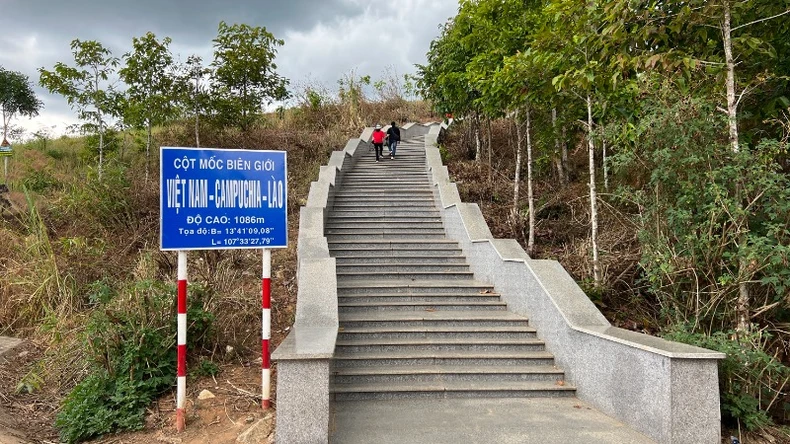
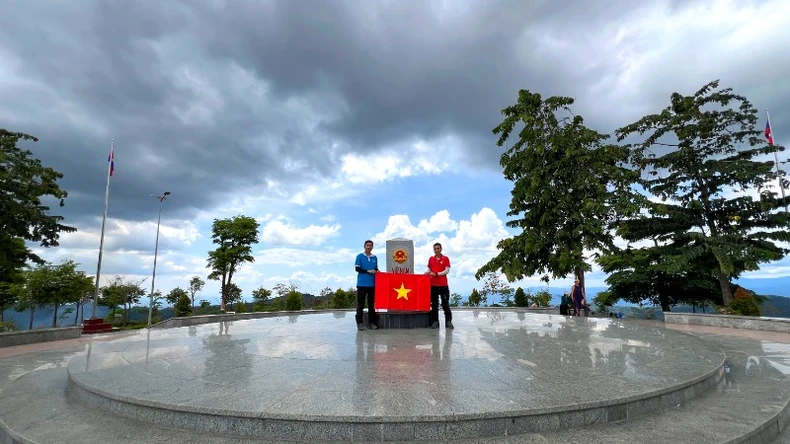
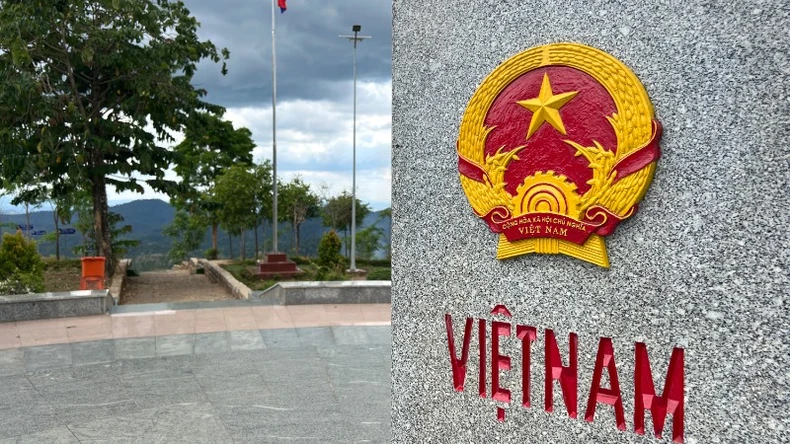
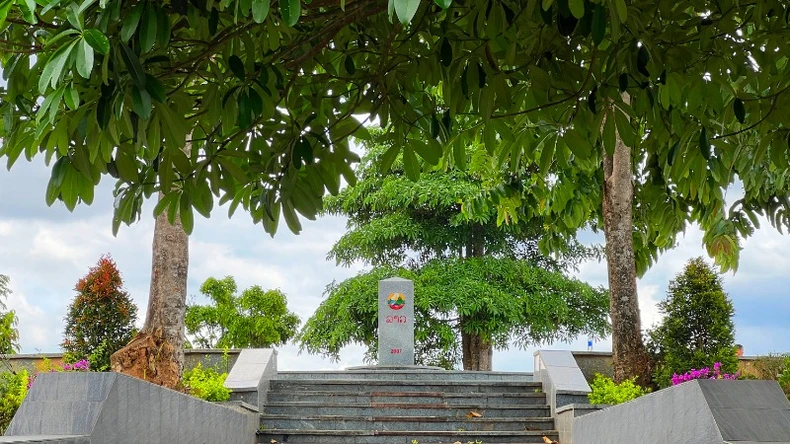
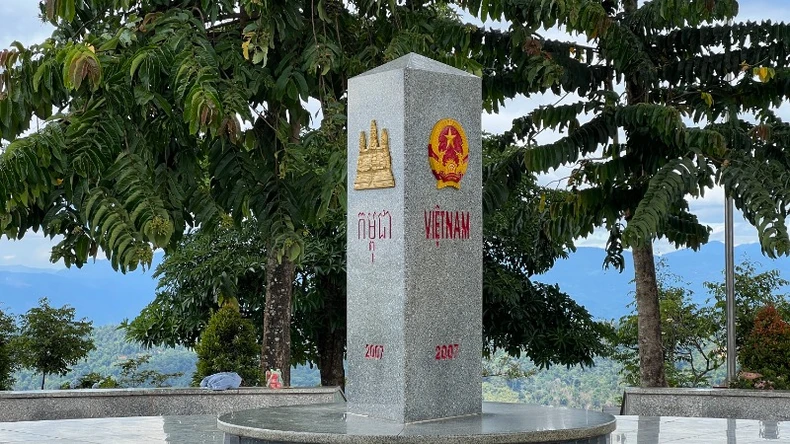
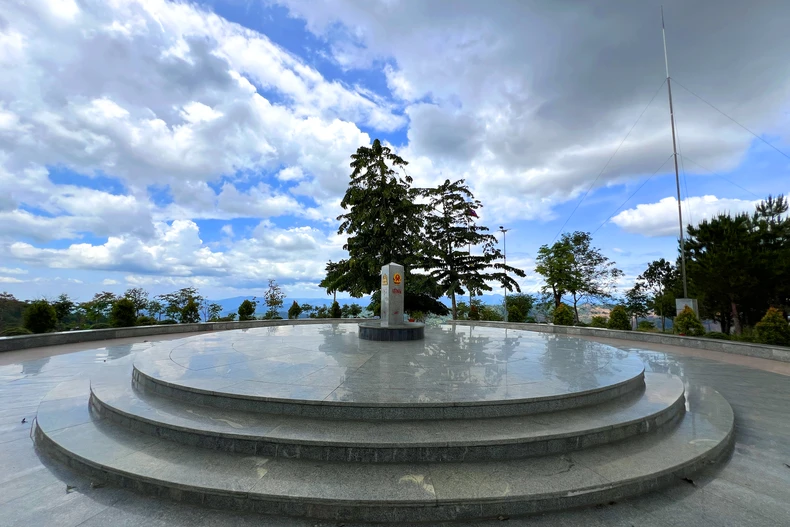

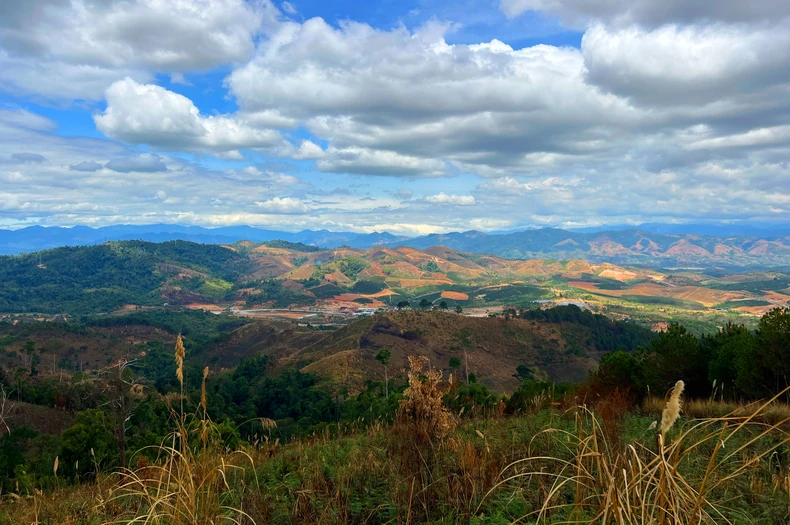
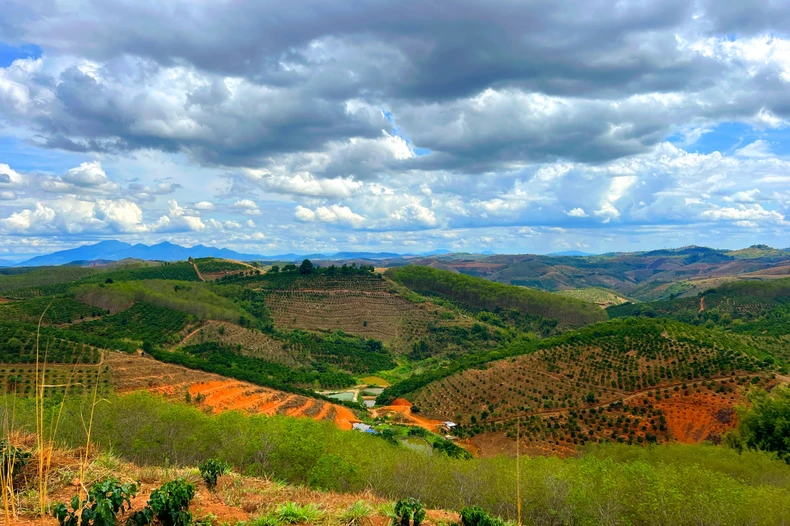
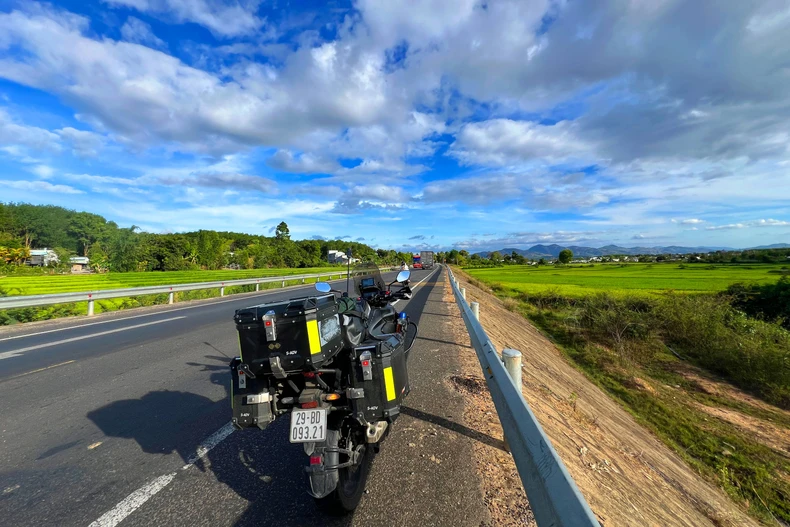
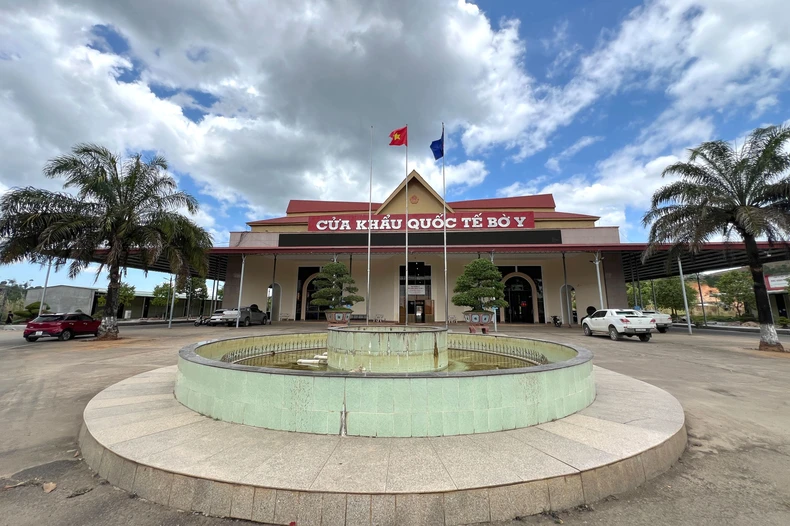
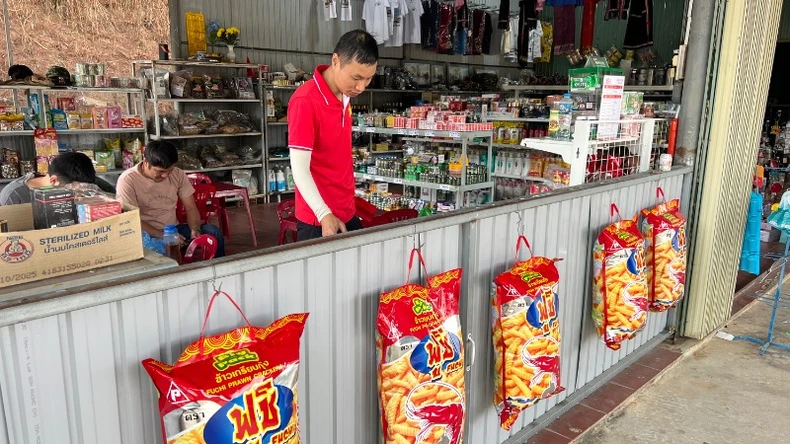

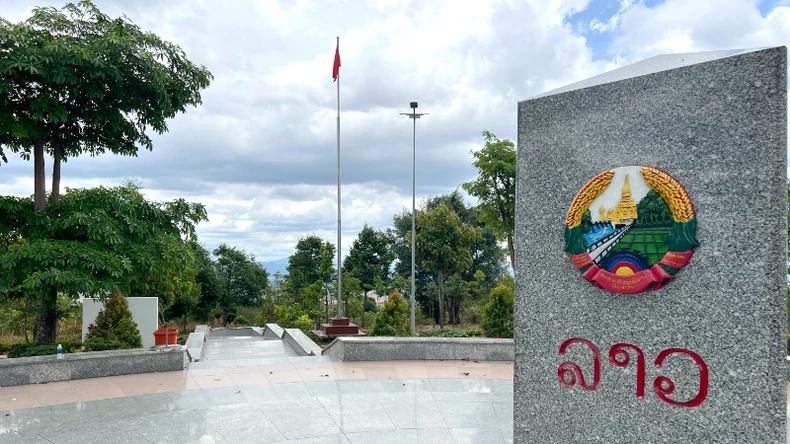
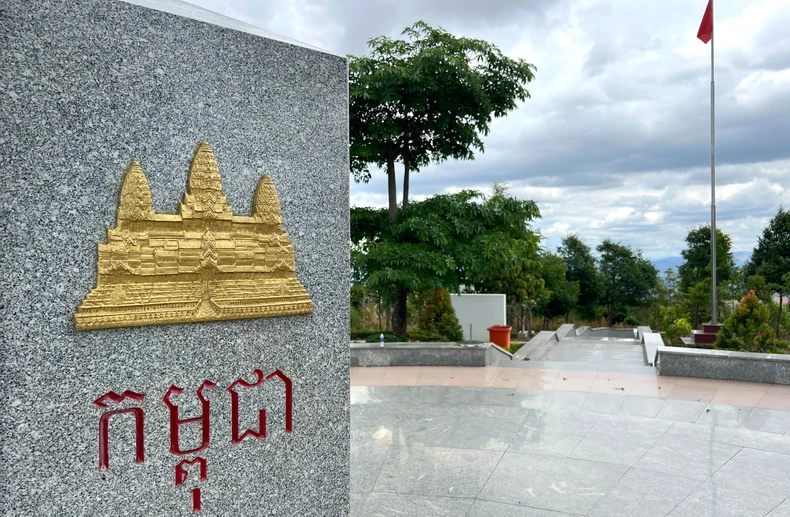


![[Photo] "Beauties" participate in the parade rehearsal at Bien Hoa airport](https://vstatic.vietnam.vn/vietnam/resource/IMAGE/2025/4/11/155502af3384431e918de0e2e585d13a)


![[Photo] Looking back at the impressive moments of the Vietnamese rescue team in Myanmar](https://vstatic.vietnam.vn/vietnam/resource/IMAGE/2025/4/11/5623ca902a934e19b604c718265249d0)

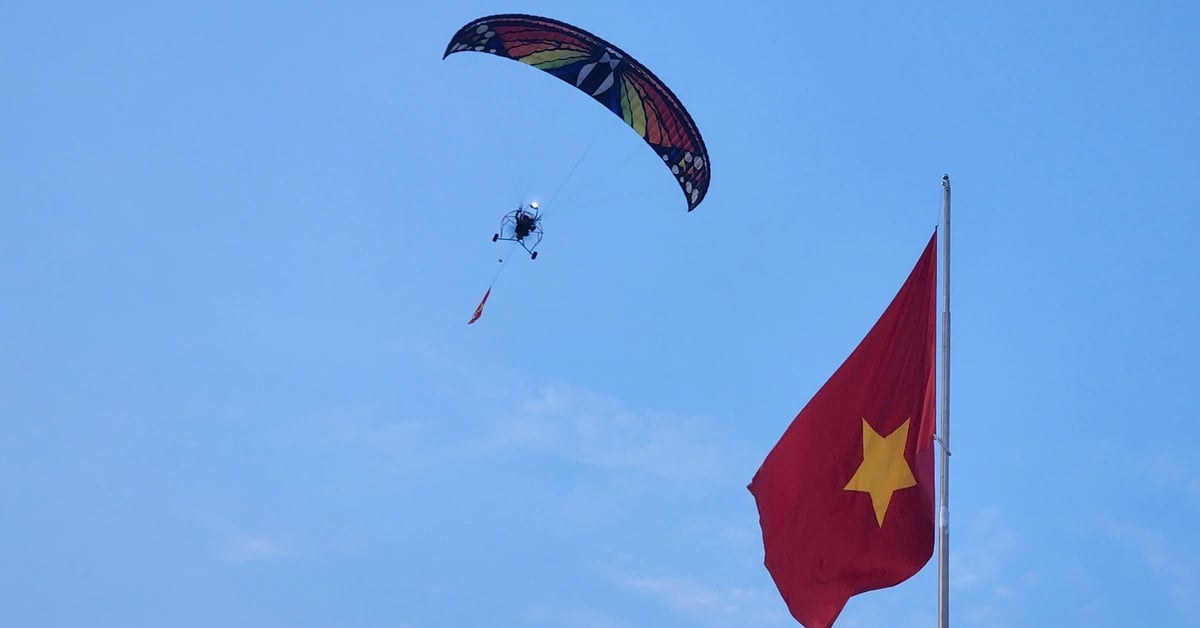
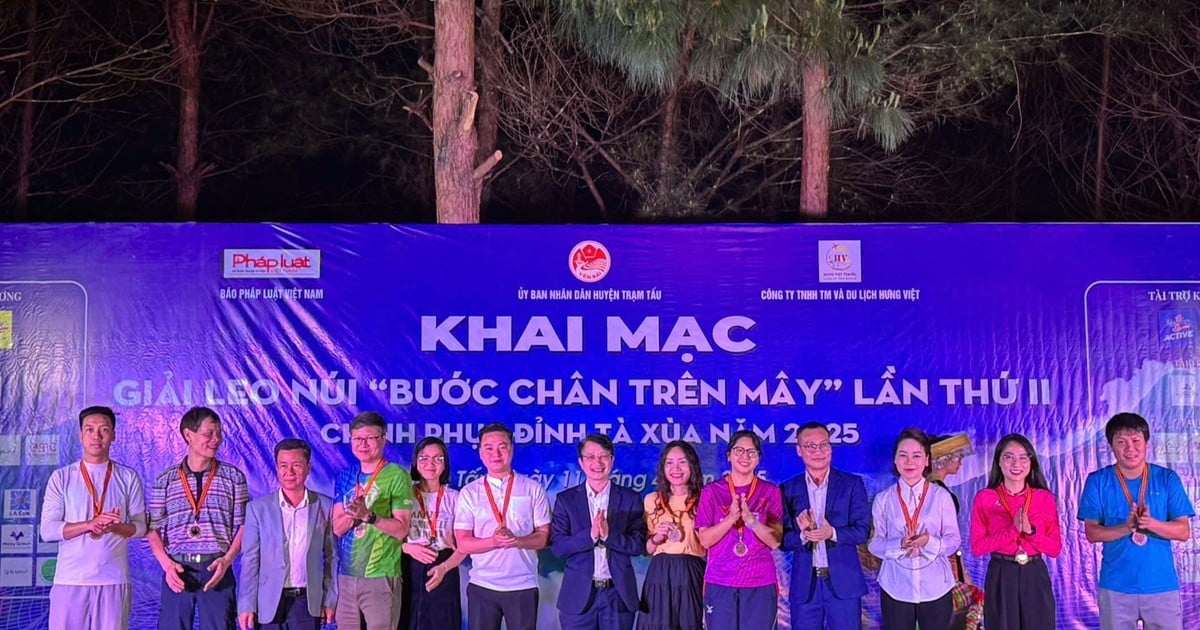
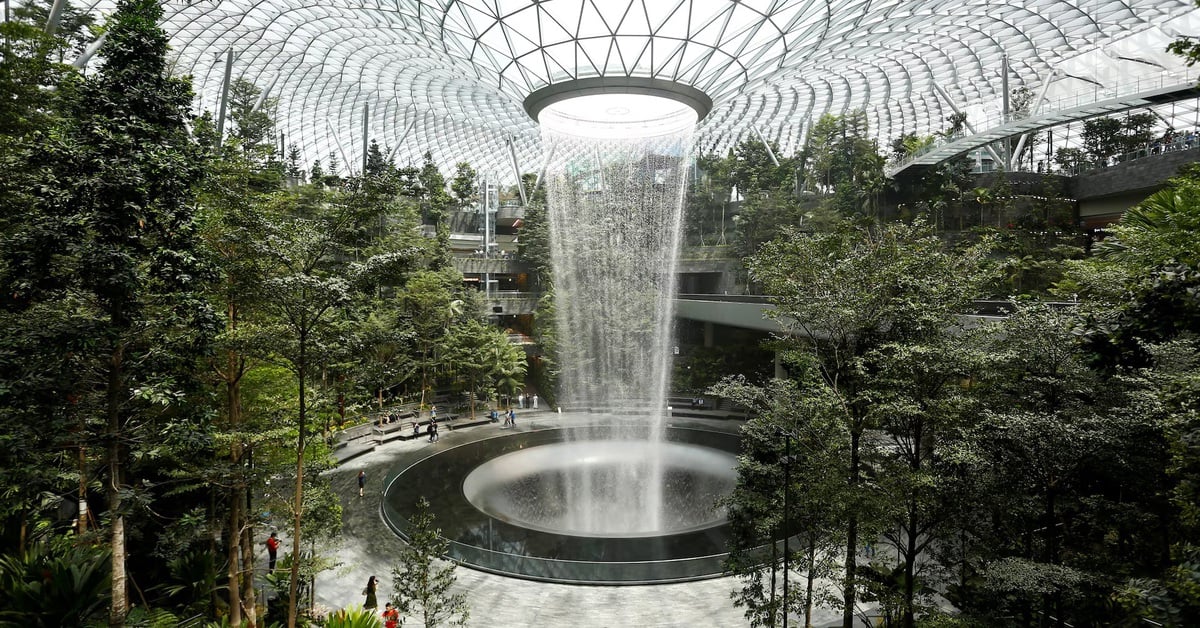

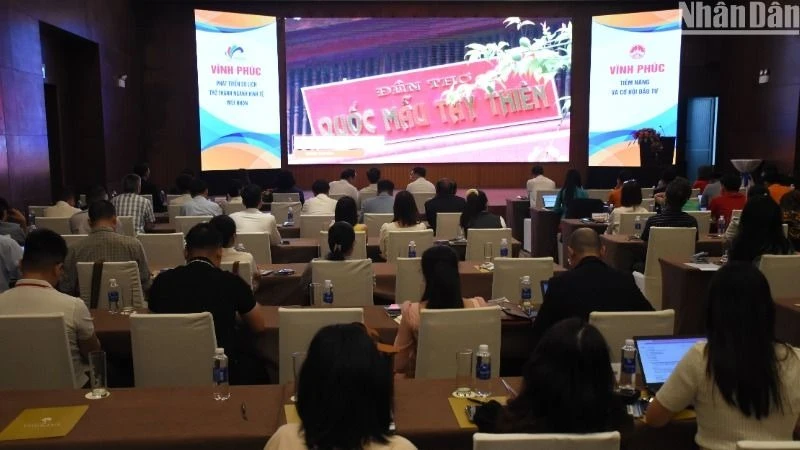




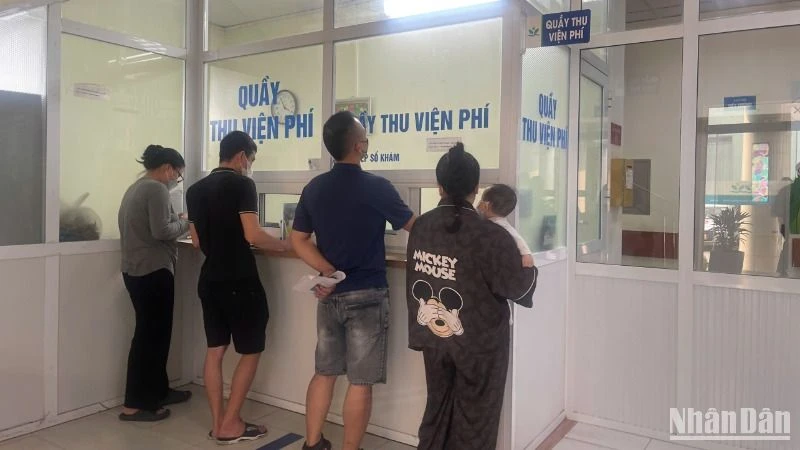
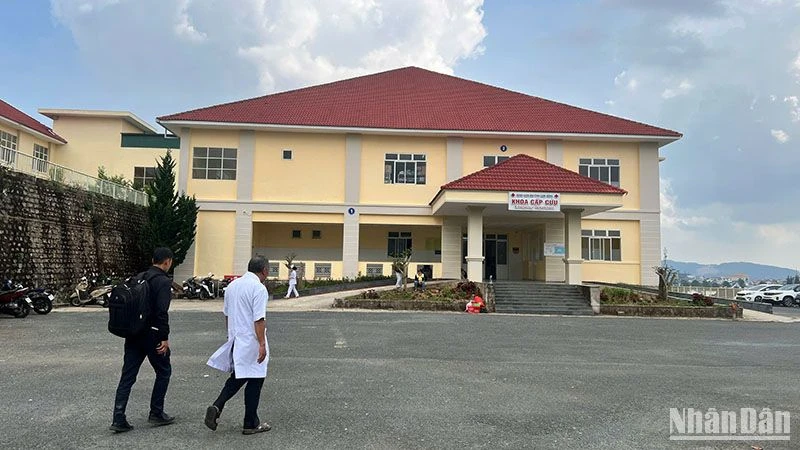
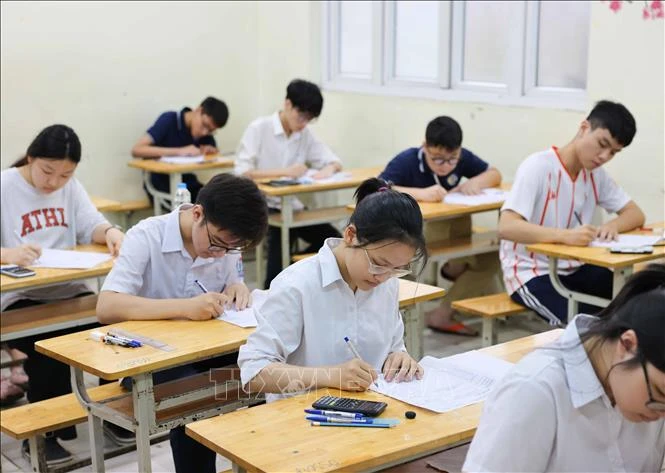
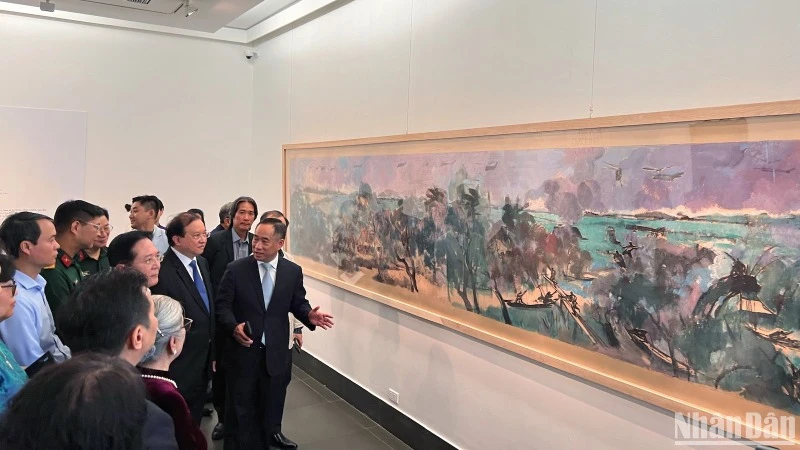

![[Photo] Summary of parade practice in preparation for the April 30th celebration](https://vstatic.vietnam.vn/vietnam/resource/IMAGE/2025/4/11/78cfee0f2cc045b387ff1a4362b5950f)









































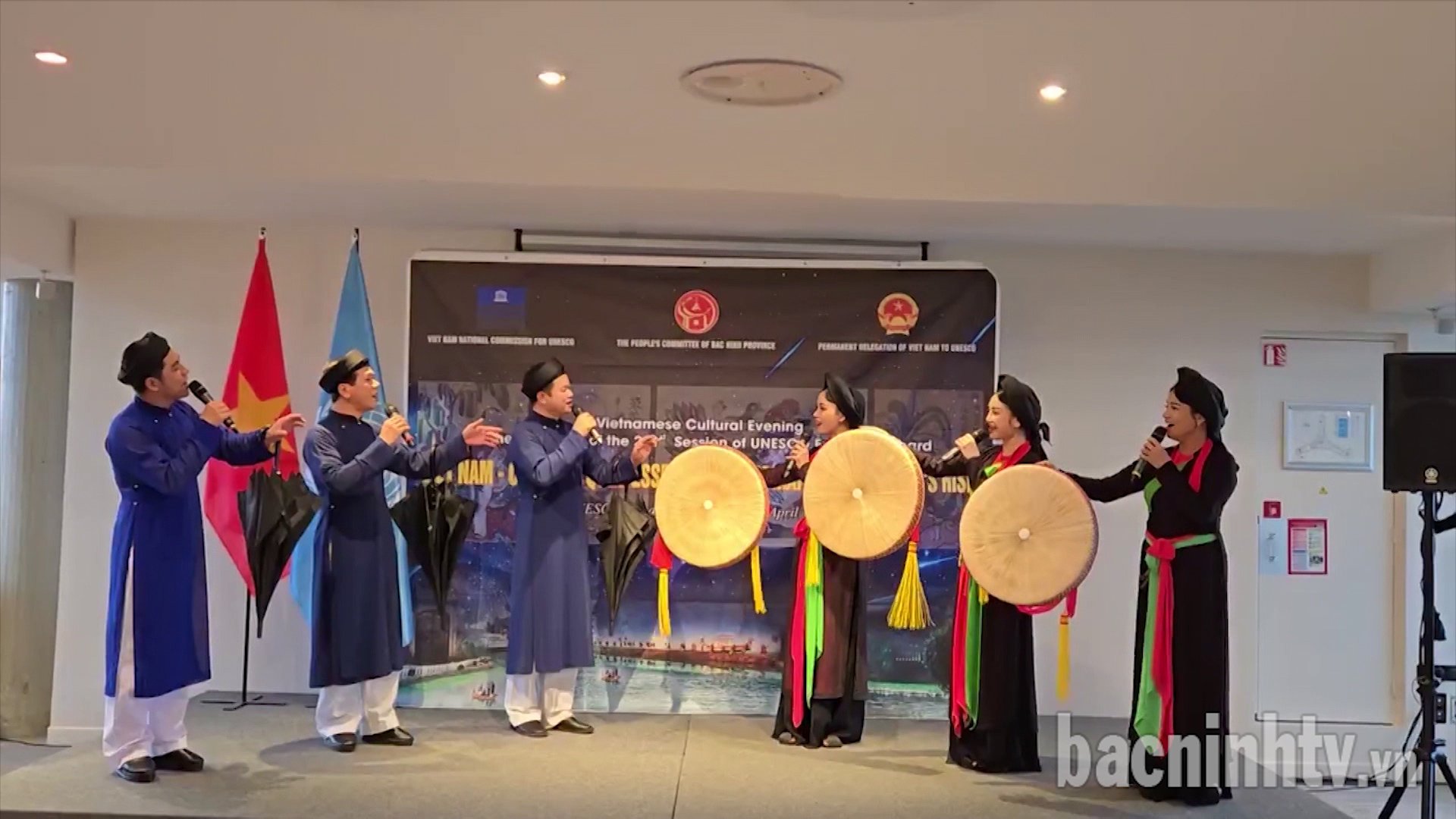
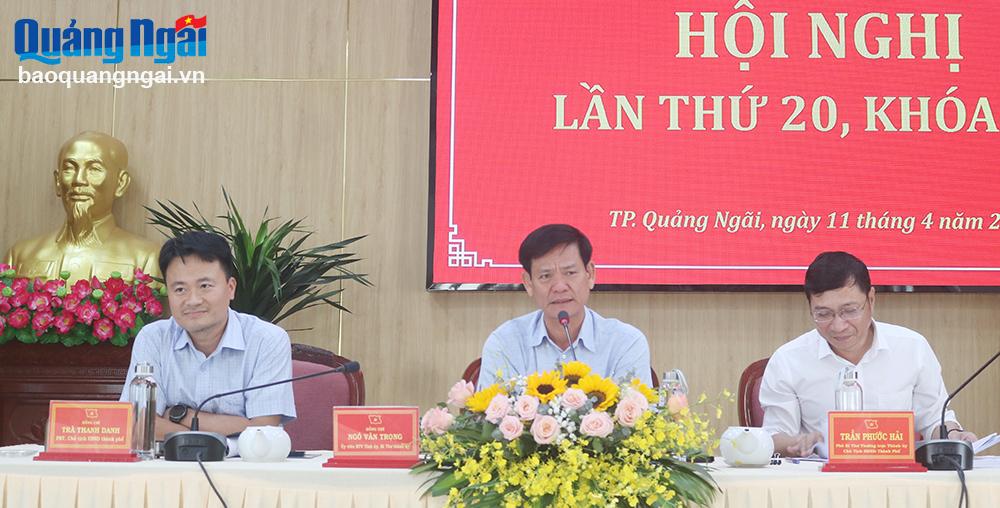
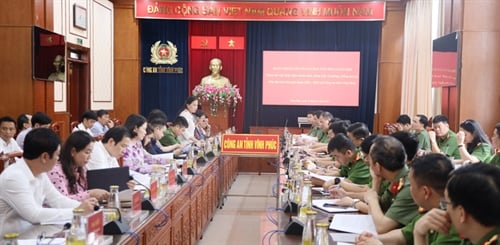
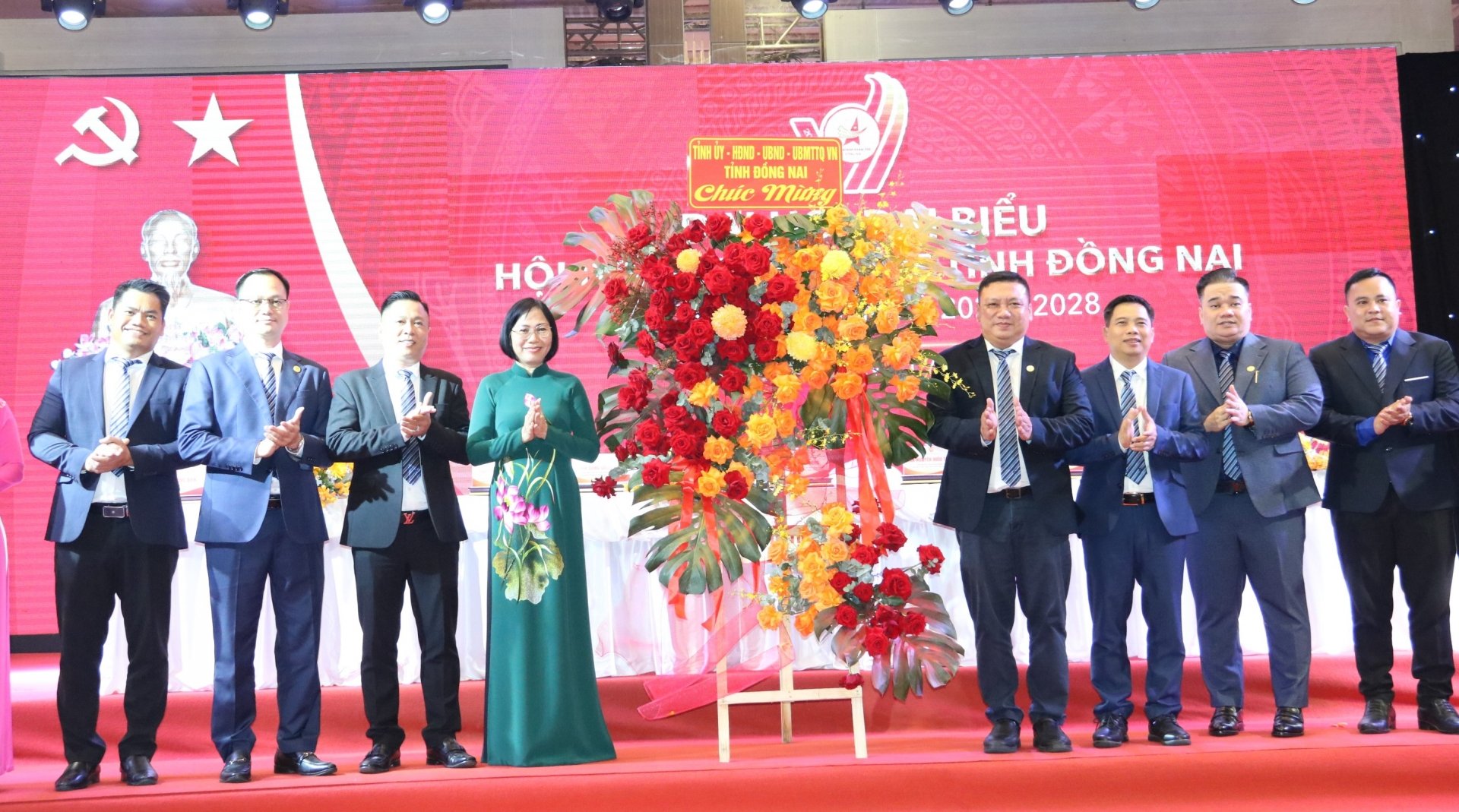

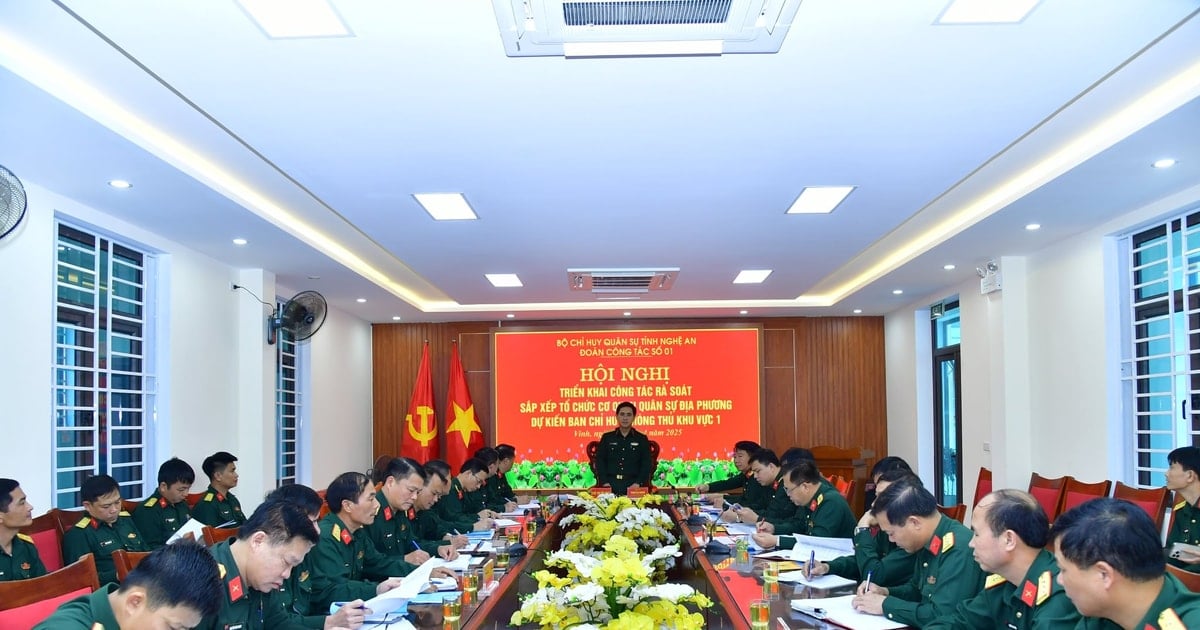

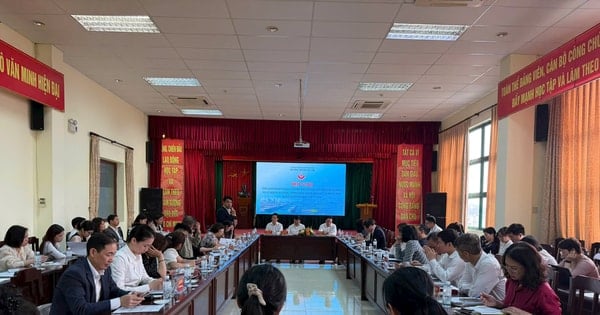











Comment (0)